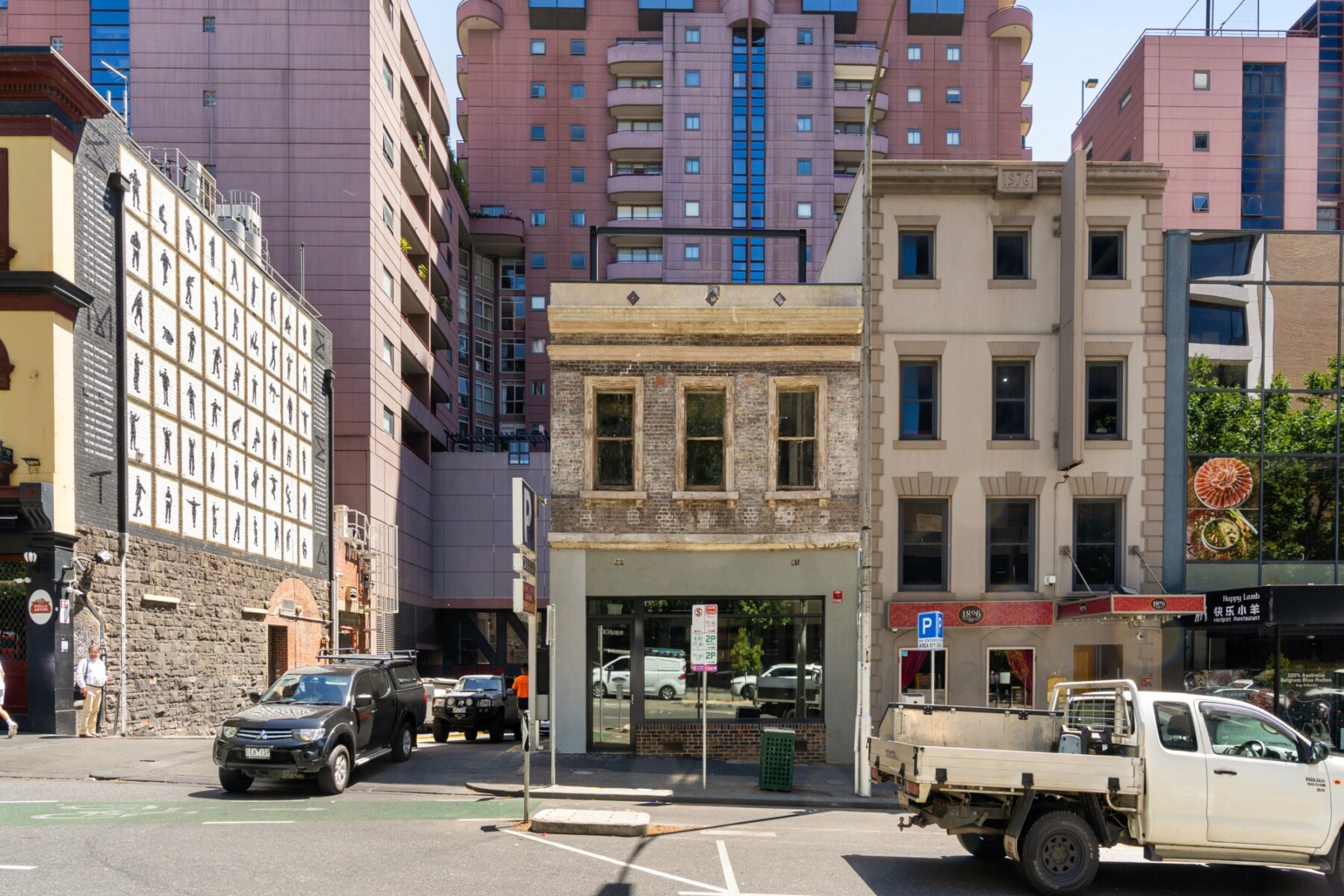A historic CBD building could become part of Melbourne’s world-famous café, dining and nightlife culture as the city undergoes a period of post-COVID renewal.
Fitzroys’ CBD Leasing Team of Travis Keenan, James Lockwood and Franklin Gikas is offering for lease the three-level building at 167 Exhibition Street on behalf of owners the The Lee Superannuation Fund.
Located in the city’s famed east end and at the gateway to Melbourne’s iconic Chinatown, the 327sqm building was originally the mid-19th century establishment The Shakespeare Hotel. It now has a 121sqm ground floor plus mezzanine, a 114sqm first floor, and second floor of 40sqm plus a 52sqm roof terrace.
According to the City of Melbourne’s Melbourne Planning Scheme The Shakespeare Hotel had its origins in the late 1860s at a time in which this northern part of the CBD was a “region known for its prostitutes, criminals and cheap lodgings”, and the The Shakespeare Hotel “illustrates this phase, its painted advertising for ‘Rooms at 3p’ still visible on a side wall”.
“The building has been made available as Melbourne’s CBD undergoes another historic phase of change,” Keenan said.
In 2022, at least 123 new hospitality venues opened up in the city, comprising cafés, restaurants, and entertainment venues such as creative and performing arts sites, nightclubs and physical recreation sites. The activity represents a record for the hospitality sector in the CBD, according to Melbourne City Council.
“The recession of the 1990s was followed by innovation and new business activity. Small bars opened, laneways were activated and inner-city living took off. The data shows something similar is happening now. This is a fantastic chance to be a part of another period of renewal for the Melbourne CBD and be part of its world-famous café, dining and nightlife culture,” Keenan said.
Lockwood said weekday enquiry has picked up, particularly from Tuesdays to Thursdays, while City of Melbourne data showed weekend visitation rates heading into summer were actually higher than pre-pandemic 2019. Foot traffic generally in January is up 20% on pre-pandemic levels.
“Hospitality venues have seen increased bookings through the week and Thursday has become the new Friday as workers begin to wind-down from their week in the office. We’re then still seeing the usual influx of visitors to the CBD on Friday nights and across the weekends.”
Heading into summer, Melbourne’s average office occupancy lifted from 45% to 57% in November, according to the Property Council of Australia, driving trade both through the day and at night.
“We’re expecting office occupancy to continue increasing, and in addition to the steady return of international students, this will further boost day-to-day trade,” Gikas said.
